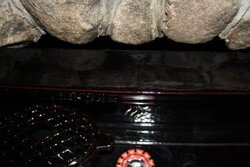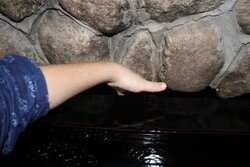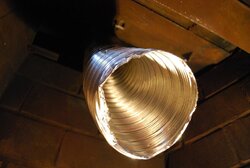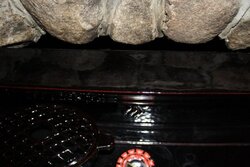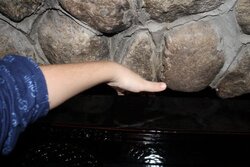SherryAnn said:
cocey2002 said:
Hey Sherryann, Stuff that sucker full with wood. I always keep an axe by my woodpile to split some wood into smaller pieces. Leave the air wide open for 20-30 minutes. If the fan comes on turn it on low. After 20-30 minutes your wood should be burning great. Try backing the air down an inch or so. I hear a whistle type noise start when I do this. Try getting your temps up to 300-350. Once at 350 back it down another inch or more and turn fan on high. If you can't get these types of temps with this procedure your wood isn't seasoned well enough. If you hit 350 you are really cooking. My LR is 84 degrees as we speak.
I've been doing EXACTLY what your telling me, but I'm blowing through wood at an amazing speed and the house is only 2 degrees warmer than when we started the stove two hours ago. I think our wood is not great, but it's not horrible either. I switched out the thermometer yesterday, I still can't get the stove to 300.
If you are loading the stove up and can't achieve 300 degrees, I think it comes down to a few possible problems.
1. Wood is suspect - Do you know what kind of wood it is? If you load the box up with dry OAK (running North/South), you should hit 350 to 400 and it should last longer than two hours before reducing to small coals with the air shut down 1/2 to fully closed.
2. Cold drafts in house are robbing your heat. Do you have a modern house with good insulation and windows?
3. External mason chimney pouring cold air down your flue and cooling down your stove.
4. Too much draft in stove - with the stove air closed down, do you see active flames rising? You really shouldn't see flames rising, it should be more like dancing flames (secondary burn) moving around in the box.
5. Is your brick hearth above the stove getting hot? If I load mine up and get to 350/400, the bricks above the stove get real hot and throw off heat too.
You will only start throwing beneficial heat once you get into the 350/400 degree range. I think you said your installer is coming on Friday. Maybe you can review your procedure with him and see if he can point something out.
I should also mention preparing for next year. Don't wait until spring or summer to get your wood for next years burning season. It's best to be 1 year ahead with you wood supply. Here's the reason. If you season the wood yourself, you know it's aged properly. If you buy seasoned wood, you pay more and you really don't know if it's been properly seasoned.
Hang in there, sooner or later you'll find the problem...


